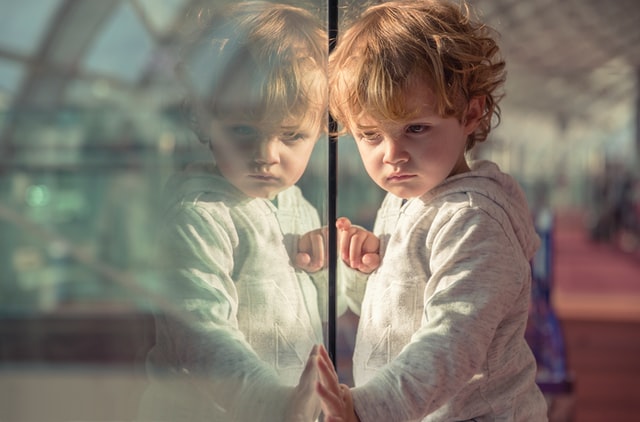My child whines all day, what can I do about it?
by Consuela Hendriks
Who doesn’t experience this at some point, a child that seems to be whining all day. No interest in play, you can’t seem to do anything right, which also irritates you and puts you in such a negative spiral together. As a result, short fuses and a nasty atmosphere. Why is this happening and what can you do about it?

What is whining?
Whining is a sign of dysregulation. Whining happens because there’s something that doesn’t work for your child (anymore), and they don’t know how to change it. It’s a sign that your child needs your help and closeness to deal with this. The child is looking for connection. A child’s whining and crying are ways of the vocalization system for attachment. It responds to an auditory sensitivity and serves the purpose of attracting the attention of the caregiver (Chang & Thompson, 2010), distracting them from what they’re doing, and eliciting a response (getting the caregiver close by) (Chang & Thompson, 2011). Whining is therefore very functional behavior, it’s supposed to be annoying in order to get your attention!
Why doesn't my child play when there are so many toys?
Only when the caregiver has addressed the underlying frustration together with the child and the need for connection is fulfilled, the child can explore again with a filled ‘love bucket’. If there is no connection, do not expect your child to play ‘because they have so many toys’. Play takes place from a state of rest, and there can only be rest when attachment needs, amongst other basic needs, are met. Only when the relational hunger (attachment, connection) is fulfilled, and has some overflow, there will be room for play (Macnamara, 2016).
What can you do?
Your child needs your help to solve or accept what doesn’t work. You can help your child through co-regulation:
- Try to get to your child’s level (literally at the same eye level) and make room for the emotion you see boiling up.
- Name the emotion: I see you’re very angry/ I hear from the tone of your voice that you’re struggling.
- Ask how you can help your child. Older children may be able to articulate what they need, but often this is not possible in younger children as their logical thinking has not yet fully developed (and also goes into the background when there are big emotions at play). But asking the question indicates that you are there for your child.
- It may be that your child needs physical contact. Or, it may be they don’t want physical contact. And it may also be that the frustration comes out in the form of either tears or aggression. Make space for those emotions, as constrained emotions don’t bring about change. In the case of aggression, ensure safety for the child, siblings and things nearby. You can definitely set a limit: “It’s ok to be angry, but I’m not going to let you hit your sister, so I’m going to hold your hands.”
- Try to help your child turn aggression into sadness. When tears come, the body can get rid of stress. Biochemical research shows that emotional tears contain more stress hormone than, for example, tears as a result of cutting an onion (Frey & Langseth, 1985).
- Make time for 1-on-1 quality time. No distractions. Show that your child has your undivided attention.
- Also pay attention to your own state of mind. Not only to downregulate yourself but also because your emotion affects that of your child, especially if you are predominantly negative in your emotional expression (Slatcher & Trentacosta, 2012).
- Try to stay away from wanting to fix or solve the issue. Often, we talk too much and ask questions that are too difficult (Why are you so angry? Why don’t you just go play? Why are you whining like that?). Remember that when they are emotional dysregulated, it is very difficult for a child to communicate at a cognitive level (if at all). The upstairs brain (logical thinking, planning, problem solving, etc.) is not yet (fully) integrated with the downstairs brain (basic functions such as breathing, threat detection and response, emotions) (Siegel & Bryson, 2011). Emotion wins over logical thinking.
Conclusion
Be aware of the underlying causes for whining. It doesn’t help to ignore your child. It also doesn’t help to shame them (“you act like a baby”) or punish them. Try to focus on what your child needs and connect.
References:
Chang, R. S., & Thompson, N. S. (2010). The attention-getting capacity of whines and child-directed speech. Evolutionary Psychology, 8(2), 147470491000800209.
Chang, R. S., & Thompson, N. S. (2011). Whines, cries, and motherese: Their relative power to distract. Journal of Social, Evolutionary, and Cultural Psychology, 5(2), 131.
Frey, W. H., & Langseth, M. (1985). Crying: The mystery of tears. Harper San Francisco.
MacNamara, D. (2016). Rest play grow. Vancouver: Aona.
Siegel, E. D., & Bryson, T. P. (2011). The whole brain child: 12 revolutionary strategies to nurture your child’s development mind.
Slatcher, R. B., & Trentacosta, C. J. (2012). Influences of parent and child negative emotionality on young children’s everyday behaviors. Emotion, 12(5), 932.
Photo by Johnny Cohen on Unsplash
